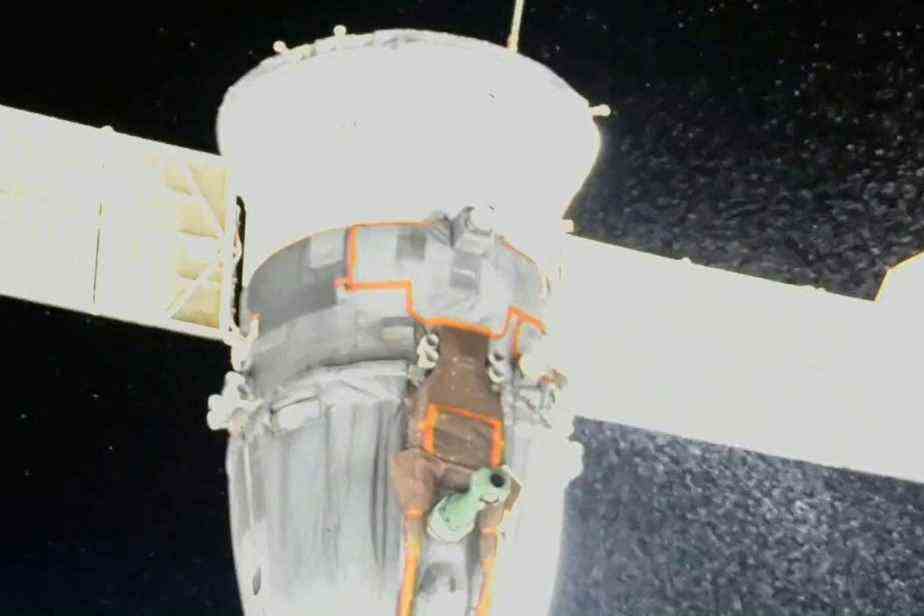(Washington) Russia was evaluating the airworthiness of its spacecraft docked at the International Space Station (ISS) on Thursday, after an impressive leak that occurred last week, and was considering a rescue mission for stranded crew members.
The leak of coolant from the Soyuz MS-22 spacecraft into space began on December 14. On images broadcast by NASA, we could clearly see a jet of particles escaping from the rear of the vehicle.
The damage is being assessed, said Sergei Krikaliov, director of human spaceflight at the Russian space agency Roscosmos, during a press briefing organized by the American space agency on Thursday.
If a thermal analysis – which assesses the temperature inside the cabin – concludes that the MS-22 spacecraft is unfit to accommodate a crew, the launch of another Soyuz capsule scheduled for mid-March from the cosmodrome of Baikonur, Russia’s launch base in Kazakhstan, could be advanced and the capsule would join the ISS without a crew, he said.
“They plan to send the next Soyuz vehicle at the end of February,” added Joel Montalbano, NASA ISS manager, who was also on the call.
If that happened, the damaged spacecraft would return to Earth without a crew.
The Soyuz MS-22 spacecraft brought in September the two Russian cosmonauts Sergei Prokopiev and Dmitri Peteline, as well as the American astronaut Frank Rubio.
There are currently seven people aboard the ISS, but if the MS-22 spacecraft were deemed unfit, it would also mean the space station would have a single rescue vehicle, capable of carrying only four people, just in case. it should be evacuated.
Russian Anna Kikina, Americans Nicole Mann and Josh Cassada and Japanese Koichi Wakata arrived aboard a Dragon capsule from the American company SpaceX in October.
Further work is still needed to determine whether the problem was caused by small, naturally occurring meteorites, man-made debris in orbit, or hardware failure, he added.
The ISS is one of the few fields of cooperation still in progress between Moscow and Washington since the start of the Russian offensive in Ukraine, launched on February 24, and the Western sanctions that followed.
The International Space Station was launched in 1998 at a time of US-Russian cooperation, following the space race the two countries had engaged in during the Cold War.
